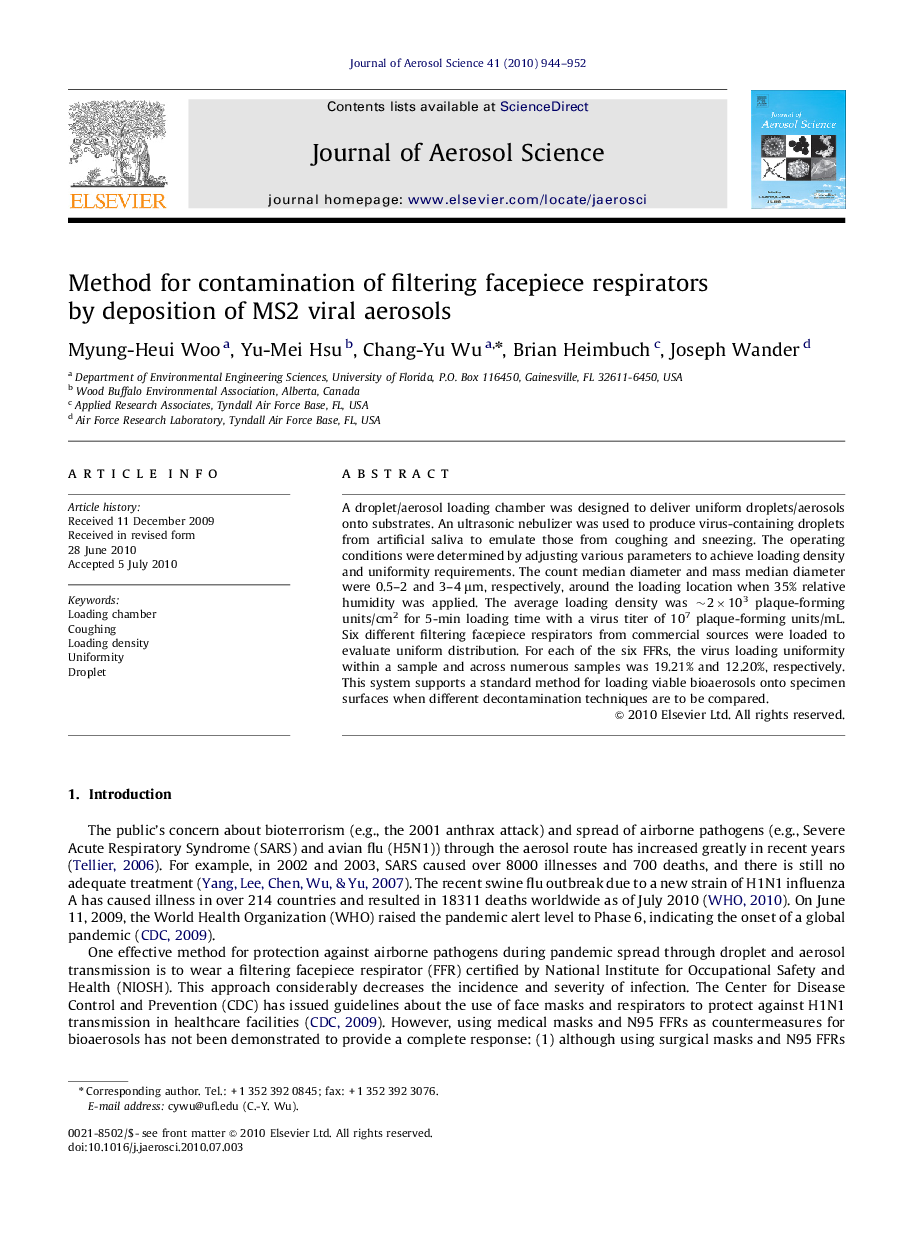| Article ID | Journal | Published Year | Pages | File Type |
|---|---|---|---|---|
| 6344584 | Journal of Aerosol Science | 2010 | 9 Pages |
Abstract
A droplet/aerosol loading chamber was designed to deliver uniform droplets/aerosols onto substrates. An ultrasonic nebulizer was used to produce virus-containing droplets from artificial saliva to emulate those from coughing and sneezing. The operating conditions were determined by adjusting various parameters to achieve loading density and uniformity requirements. The count median diameter and mass median diameter were 0.5-2 and 3-4 μm, respectively, around the loading location when 35% relative humidity was applied. The average loading density was â¼2Ã103 plaque-forming units/cm2 for 5-min loading time with a virus titer of 107 plaque-forming units/mL. Six different filtering facepiece respirators from commercial sources were loaded to evaluate uniform distribution. For each of the six FFRs, the virus loading uniformity within a sample and across numerous samples was 19.21% and 12.20%, respectively. This system supports a standard method for loading viable bioaerosols onto specimen surfaces when different decontamination techniques are to be compared.
Related Topics
Physical Sciences and Engineering
Earth and Planetary Sciences
Atmospheric Science
Authors
Myung-Heui Woo, Yu-Mei Hsu, Chang-Yu Wu, Brian Heimbuch, Joseph Wander,
